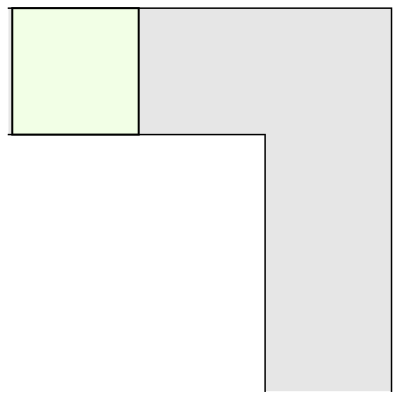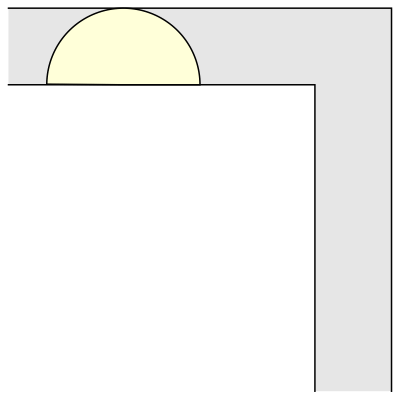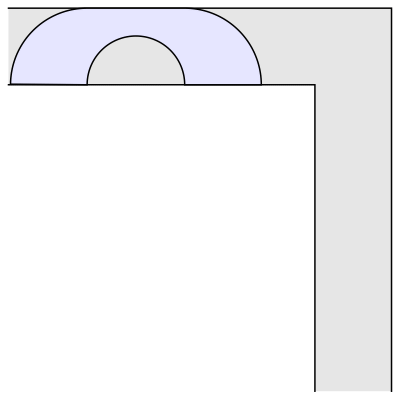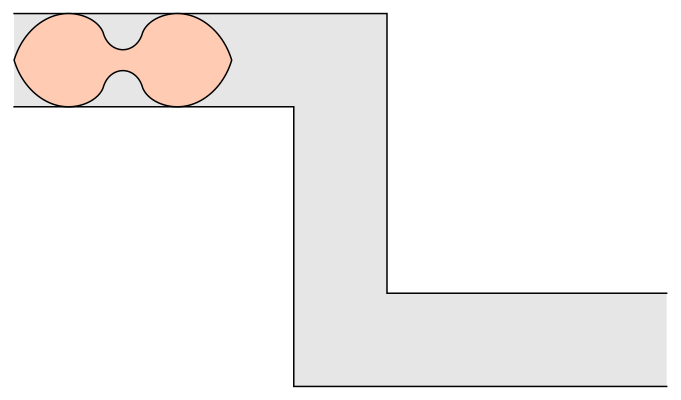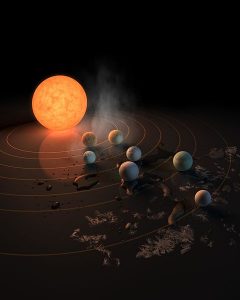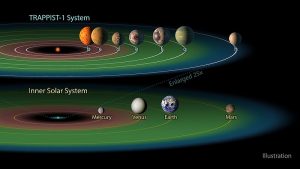Anyone who has participated in the urban ritual of moving big things through small doorways understands the unique struggle of moving sofa couches. Luckily, mathematicians have found the answer to the woes of furniture movers.
This problem was first formalized in the 1960’s by Leo Moser: what is the largest sofa that can fit around a hallway corner?
Of course, an experienced mover will tell you to stand the sofa on one end, but in what came to be known as the moving sofa problem, we imagine a really, really heavy sofa that is impossible to lift, tilt, or even squish.
Though the problem is simple to understand, it has remained unsolved for over half a century.
First, mathematicians realized the simplest shape to get around a corner doesn’t need to be rotated: a square. If we think of each side of this square as being 1, it has the area=1.
Next, mathematicians understood they could use rotation to help solve the problem and showed a half-circle with an area of about 1.5 would squeeze through the corner.
By combining these shapes, John Hammersley designed a sofa in 1968…

That random couch in your grandparents’ basement | Ronald Crufke, August 2010 Ugliest Couch, Norwood Mall
Hideous. No, the Hammersley Couch actually looks like this, with an area of 2.2, more than double the square sofa! He considered this solution to be the best possible.
However, in the 1990’s the mathematician Joseph Gerver dropped a bombshell. He toppled Hammersley’s record sofa with complex mathematics, creating a truly marvellous eighteen sided couch. Prepare yourself, this is the most beautiful sofa thus-known to humankind.
Okay, that may have been an exaggeration. By slightly modifying Hammersley’s Couch design, Gerver was able to increase the area by a whopping 0.5%.
But in mathematics, only one example of something contrary to the rule is enough to disprove the previous finding.
But there’s a common problem with all of these couches – they only turn one direction! What happens if you live somewhere that has both left and right 90° turns?

Unfortunately for Ross, his friends were not mathematicians that could help him derive the optimum couch shape for optimum pivotability | tenor
Enter Dan Romik, a prolific mathematician at the University of California, Davis. Using similar techniques to Gerver, he recently found the likely optimum shape for this unique version of the moving sofa problem.
Romik’s results not only look like a cool modern design for two chairs attached by a table, they also led to surprisingly simple solutions to complex mathematical problems. However, there are still many questions left open in his paper – no one has proved the optimum shape.
Often with difficult mathematical problems, new fields must be developed in order to solve them definitively. There is still much left unproven in mathematics.
– Braydan Pastucha

/about/moving-couch-resized-58a4befb5f9b58a3c92c65fe.jpg)
